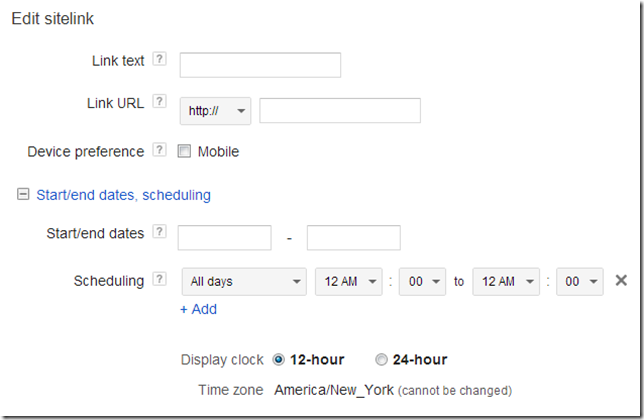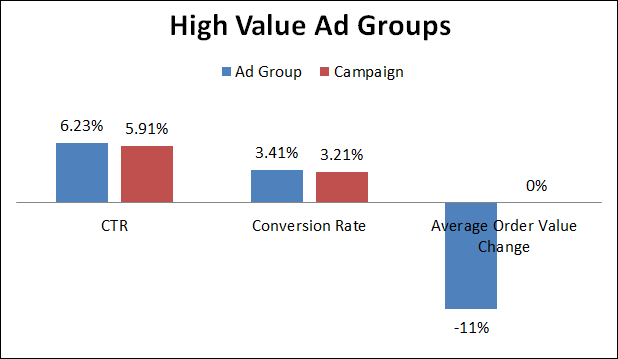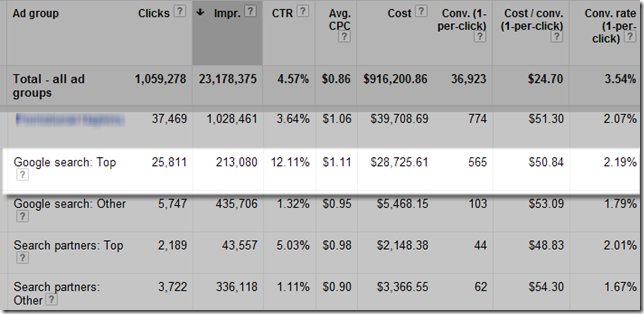Should You Create Ad Group Sitelinks in Enhanced Campaigns?
One of the nicest things about AdWords Enhanced Campaigns is that you can now control sitelinks at the campaign or the ad group level. From a feature standpoint, this sounds great. However, when you start considering the execution phase of creating sitelinks for every single ad group, the task can suddenly seem quite daunting. First, […]
One of the nicest things about AdWords Enhanced Campaigns is that you can now control sitelinks at the campaign or the ad group level. From a feature standpoint, this sounds great. However, when you start considering the execution phase of creating sitelinks for every single ad group, the task can suddenly seem quite daunting.
First, we’ll cover how sitelinks work. Then, we’ll need to determine whether or not we should upgrade our ad groups; and if so, create a priority order.
About Sitelinks
Sitelinks allow you to add additional information below the ad.
Each sitelink can also be customized with ad scheduling, destination URLs, and mobile preference options in enhanced campaigns.
Sitelinks can be created at the campaign level or the ad group level. If you have a campaign sitelink, that sitelink will be used for every ad group in the campaign, unless the ad group also has a sitelink, in which case the ad group sitelink will be used.
Let’s say you have two campaigns — one for mobile devices and one for desktops. You have 20 ad groups per campaign, and you want to create 6 sitelinks per ad group. All of a sudden, you’re up to 240 sitelinks to create and manage!
If you have 10 campaigns with 100 ad groups each, 6 sitelinks per ad group suddenly becomes 6,000 ad group sitelinks to create and manage. You can see how this quickly becomes a lot of work. So the question is, should you create ad group level sitelinks?
A Quick Case Study
The Case Study Layout
For this case study, I took 9 e-commerce accounts that spend $75k to $200k per month each, with a combined spend at around $1 million per month, to get a cross section of mid-sized e-commerce accounts.
The way the sitelinks were created at the ad group level depended on the keywords in the ad group:
- For low value items, the sitelinks were focused on cross sales
- For high value items, the sitelinks were focused on upsells
- For ambiguous searches, the sitelinks were focused on the specific items to narrow down the user interest
For each of these types of sitelinks, I calculated these metrics:
- CTR
- Conversion rate
- Average order value
These metrics are not completely apples to apples. There isn’t a good way to test ad group level sitelinks versus campaign sitelinks as you can’t easily rotate what type of sitelink is being used. The only other way to test these items would be with two identical campaigns that had different sitelinks. At present, the effort to do this is not worthwhile due to how difficult ad group sitelinks are to create (more on this later).
Therefore, I compared a month of ad group level sitelinks versus the previous month where only campaign sitelinks were used. None of these accounts had any “peak periods” during those two months, and the ads remained static for the entire test — so, there aren’t any outliers affecting the data. However, this isn’t a 100% scientific test, as it is examining different time frames.
The Results
Low Value Items
The low value item sitelinks focused on cross sales, attempting to increase the average order value by getting the user to buy more total products. The CTR and conversion rate changes for the low value ad groups was negligible. However, using more cross sale ad groups did have a positive impact on the average order value, even though it was quite low.
In a high volume account, this is potentially a great strategy. In a low volume account, you might make better use of your time with landing page and ad testing versus spending hours creating lots of sitelinks.
High Value Items
The high value ad group used upsells in the sitelinks to try and increase the number of accessories bought with the expensive product. In all cases, the upsell products were 50% or less than the average value of the product being searched.
The high value ad groups saw a bit of a bump in both CTR and conversion rate. However, there was a negative effect on the average order value. What happened is that some people ended up buying just the upsells and not the actual product.
For some of the accounts, the increase in CTR and conversion rates more than made up for this negative average order value; however, in 3 of the 9 accounts, the average order value change made it so this type of sitelink was less profitable than just using standard campaign sitelinks with new items, shipping policies, etc.
Ambiguous Queries
The ambiguous ad groups are the ones I had the most hopes of boosting with ad group sitelinks. These were commercial type queries for which the sites had to send the traffic to fairly generic category pages, as they could not guess the type of product the user wanted.
For instance, an ad for the query, “women’s dresses,” could use sitelinks such as “evening dresses,” “cocktail dresses,” “summer dresses,” etc.
Using these specific sitelinks led to a positive change in both CTR and conversion rates. The average order value dropped an insignificant 0.5%.
Within this test, the ambiguous ad groups were definitely the ones with the best overall change due to using ad group sitelinks.
The Difficulty Of Creating Sitelinks
The biggest current issue with ad group sitelinks is the poor UI and the lack of support in the AdWords editor.
If you are dealing with hundreds of sitelinks, you have to hunt for each individual sitelink you want displayed in a UI that does not have a sort or search feature. While this can be difficult in e-commerce examples, it’s very difficult in lead generation campaigns where the sitelink name might be the same for multiple geographies, but the destination URL changes by geography.
Creating sitelinks for an e-commerce account requires this type of effort:
- List out the ad groups
- Choose the sitelink per ad group
- Go into the UI for every single ad group to create ad group level sitelinks
- For each ad group, hunt through the list of sitelinks to add them to the ad group
- Save the ad group sitelinks and move on to the next ad group
In a campaign of just 50 ad groups, it took about two hours to customize all of the sitelinks.
Conclusion
For most accounts, it is not worth the time and effort to create sitelinks for all of your ad groups right now. This is not because of the results, but because of the difficulty in creating mass amounts of ad group sitelinks.
At the moment, the best course of action is to examine the ad groups with the most impressions in the “top” positions for ambiguous queries and create sitelinks for those ad groups.
Once the AdWords editor supports the bulk import of ad group sitelinks, it will be worthwhile to create ad group sitelinks for most of your ad groups.
After you create them, compare the results to what you were getting to make sure that your ad group sitelinks are helping you reach your overall account goals.
Opinions expressed in this article are those of the guest author and not necessarily Search Engine Land. Staff authors are listed here.
Related stories
New on Search Engine Land





